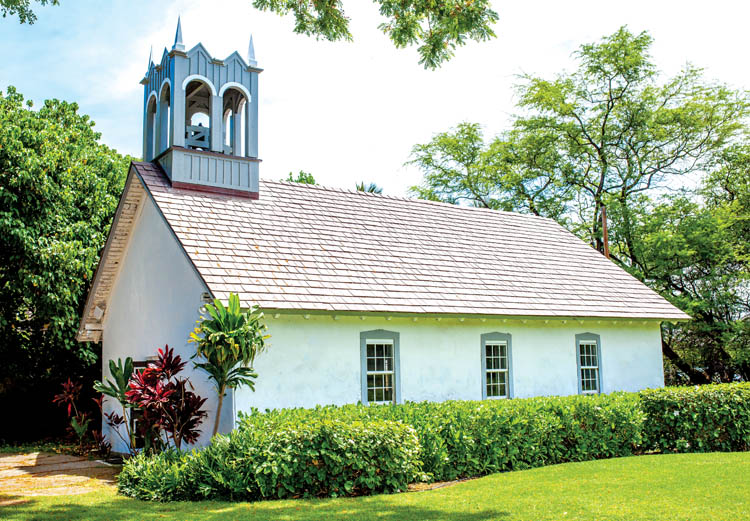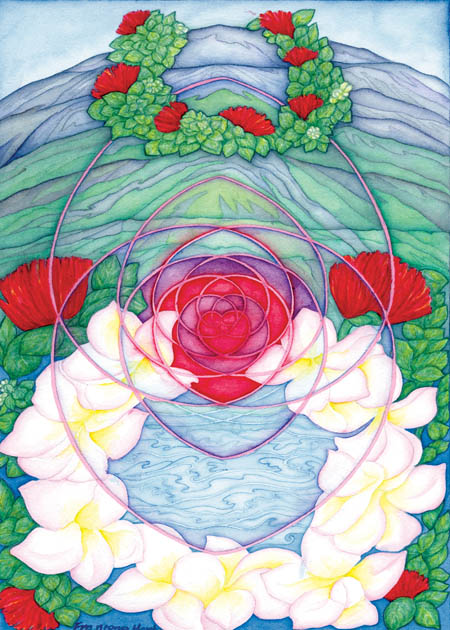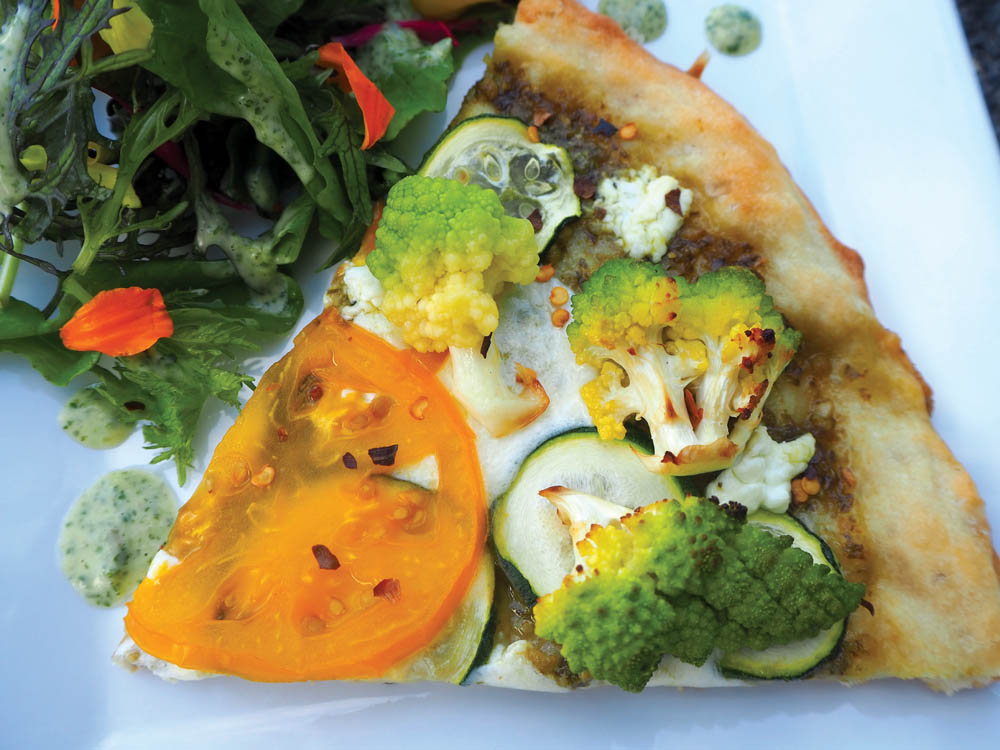
Celebrating the 2% Land Fund Successes
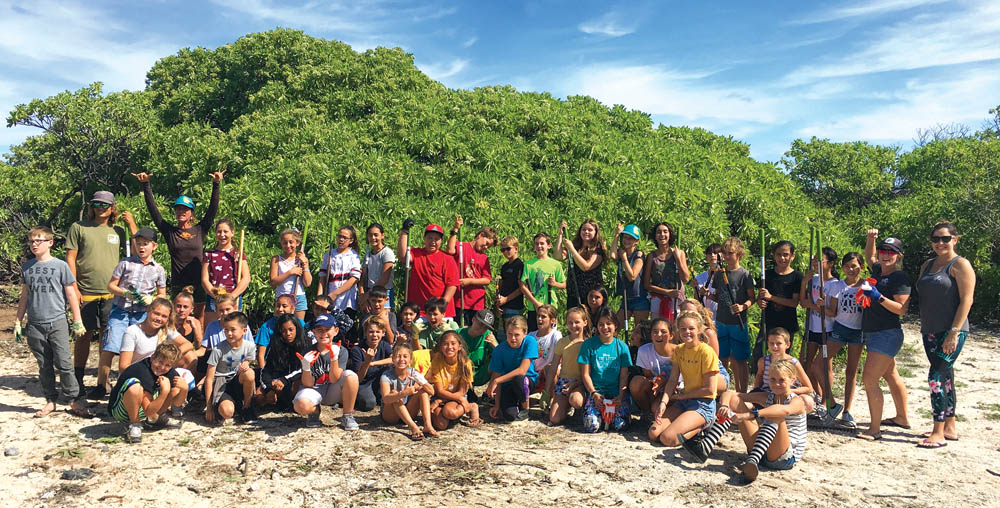
By Mālielani Larish
A Hawaiian yellow-faced bee zips through the air like a flash of black lightning, attracted to the fragrant white flower of the endemic maiapilo shrub. On this weekday morning, the shoreline of ‘O‘oma in North Kona is blissfully deserted save for the resident flora and fauna. Thanks to dedicated community organizing and the 2% Land Fund, which is powered by setting aside 2% of Hawai‘i County’s real property taxes each year, this parcel of coastline will remain in its natural state in perpetuity.

Since voters first approved the measure in 2006, the 2% Land Fund has acted like a superhero, partnering with State and Federal funding sources, nonprofit groups, and community members to save natural areas of significant cultural, historical, and environmental value from development.
Thus far, the 2% Land Fund, which is officially titled the Public Access Open Space and Natural Resources Preservation Commission (PONC) Fund, has preserved 7,500 acres on Hawai‘i Island. The public can nominate lands to be considered for purchase through an online suggestion form, and PONC produces an annual report which describes and ranks a prioritized list of the nominated properties before making recommendations to the mayor.
Debbie Hecht, Kona resident and campaign manager for the Save Our Lands Citizens’ Committee that worked to place the original 2% Land Fund measure on the ballot in 2006, says that she and Council Member Brenda Ford co-wrote the legislation for the 2% Land Fund and Maintenance Fund Charter Amendment.
“We wrote the Maintenance Fund with the intention of empowering the nonprofits,” Debbie says, referring to the 501c3 groups of community volunteers that already put their money, time, and sweat into mālama ‘āina: caring for—and in many cases improving—each of the PONC acquisitions. Nonprofit groups in Ka‘ū, North Kohala, Kona, and Honoka‘a are actively working to steward these treasured lands.
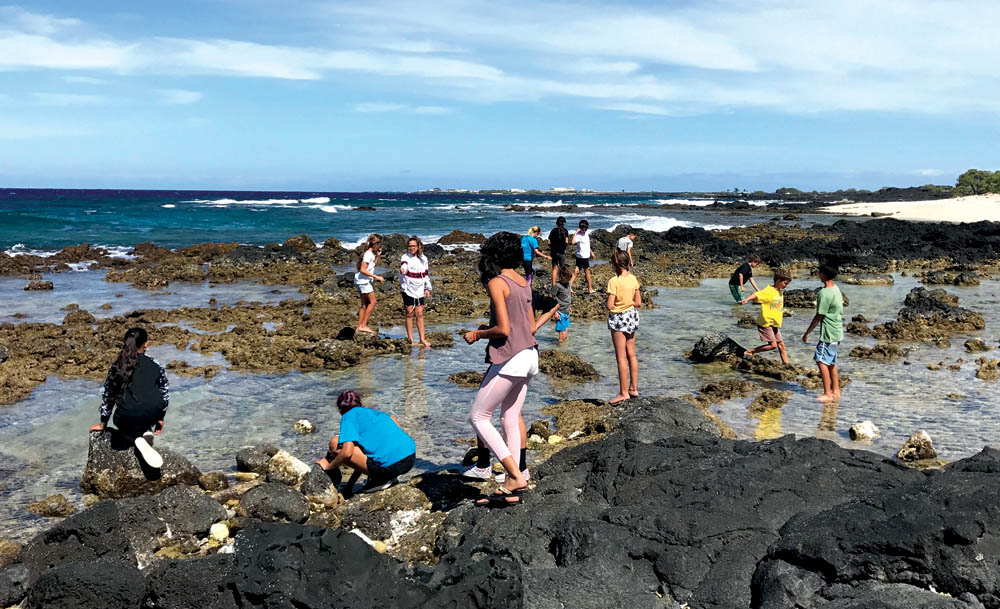
Ka‘ū
The largest acquisitions in terms of acreage have occurred in Ka‘ū, where the County acquired Kāwā, Kahua Olohu, and Kahuku. Matching funding from the State Legacy Land Conservation Program and support from the Trust for Public Land and US Fish and Wildlife Service’s Recovery Land Acquisition Program made these purchases possible. According to Debbie, using 2% Land Fund monies in order to secure matching funding represents one of the fund’s best uses.
In 2008 and again in 2011, the County purchased several parcels in the Hīlea and Ka‘alāiki ahupua‘a, preserving a four-mile stretch of coast that includes Ke‘eku Heiau and a popular surfing beach at Kāwā Bay. In addition, these properties protect habitat used by critically endangered Hawaiian hawksbill sea turtles and Hawaiian monk seals.
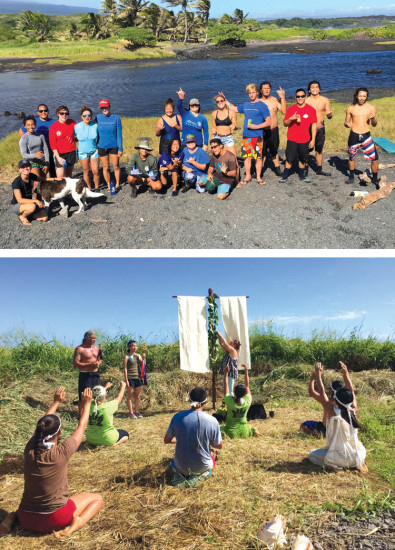
Hawai‘i Wildlife Fund’s (HWF) work to restore the estuary at Kāwā using a Maintenance Fund grant award illustrates the importance of stewardship work on PONC acquisitions. Over 276 participants, about half of whom were kids, helped to remove 2,000 pounds of invasive paspalum grass that was suffocating the fishpond and its periphery. Volunteers also removed 1,300 pounds of marine debris littering the area. HWF Director Megan Lamson Leatherman explains that during one of the 11 work parties that HWF hosted between 2017 and 2018, the grass removal exposed a set of ancient niho stones, which are the first stones laid during Hawaiian rock wall construction. This awe-inspiring moment helped the participating volunteers appreciate the significance of the work they were doing. The restored estuary serves as habitat for juvenile fish species like ‘ama‘ama (mullet) and āholehole (flagtails), and hopefully for the Hawaiian orangeblack damselfly, an endangered species which was once Hawai‘i’s most abundant species of damselfly.
In a world where natural and cultural resources are under constant threat, Megan emphasizes that Hawai‘i Island is uniquely poised to protect the abundance of natural areas that still exist here. “We wholeheartedly support the PONC program and hope that it continues to flourish,” she says.
In June 2016, the 2% Land Fund purchased 13 acres at Kahua Olohu, Ka‘ū, which beloved Hawaiian scholar Mary Kawena Pukui identified as the site of traditional Makahiki games in her writings.
Keoni Fox, board member of Ho‘omalu Ka‘ū, a nonprofit dedicated to perpetuating the culture and history of Ka‘ū, says, “When Kahua Olohu was purchased by the County, we were ecstatic—we saw that we are really answering a call from our ancestors to save something that will be a gift for the next generation. With this purchase comes the kuleana, or responsibility, to take care of it.” Keoni’s great-grandfather lived near the property and was interviewed by Pukui for her landmark book, Native Planters.
Using Maintenance Fund grant awards, Ho‘omalu Ka‘ū obtained a mower to maintain the grass-engulfed property. For the last three years, the island-encircling prayer run known as Aha Pule ‘Āina Holo has stopped at Kahua Olohu to conduct traditional protocols, and Keoni envisions using the site to educate students about traditional Makahiki games.
In December 2019, the Ala Kahakai Trail Association became the new steward of 2,317 acres at Waikapuna with the help of PONC funds, which covered about 67% of the transaction’s price. Keoni, who also serves as the director of the Ala Kahakai Trail Association, looks forward to working closely with the Ka‘ū community to mālama the land, which contains important cultural sites, the ancient fishing village of Waikapuna, and more than 2.3 miles of the Ala Kahakai National Historic Trail.
In addition, PONC funds helped secure a 3,128-acre parcel in Ka‘ū in November 2016. The Kahuku property encompasses a mile-long stretch of coastline, an endangered species habitat, an extensive anchialine pool complex, and many archaeological sites.
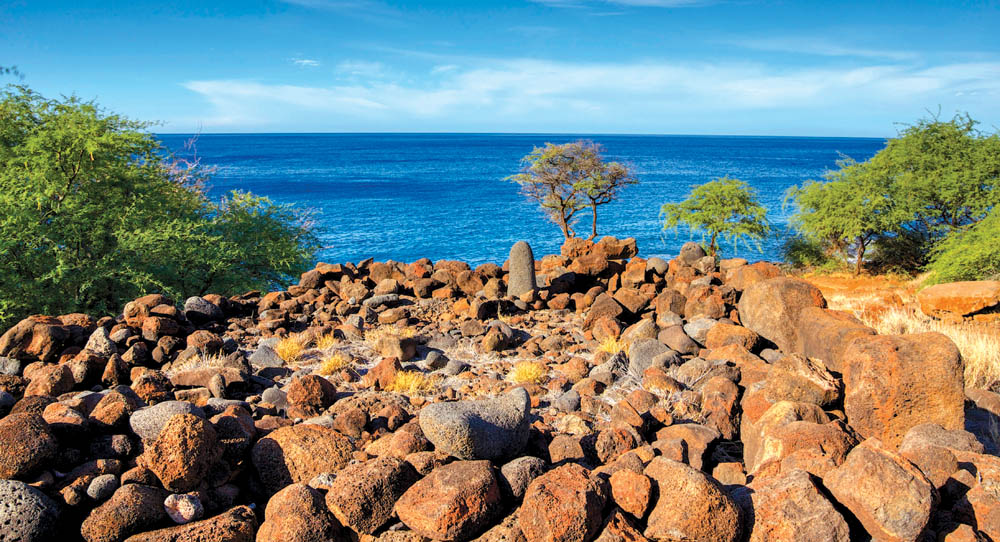
North Kohala
“Once something is built, it’s over for conservation,” says North Kohala resident Toni Withington. She echoes the feelings of many Hawai‘i residents, who testify en masse whenever the 2% Land Fund is under political threat. As part of a dedicated team of five community nonprofits that collectively operate under the name Kohala Lihikai, Toni has worked on preserving lands in North Kohala for more than 40 years. Thanks to the community’s tireless work, 390 acres of North Kohala’s coastline have been preserved as open space within the last seven years, with the 2% Land Fund and the State’s Legacy Land Preservation Program contributing the majority of the funding.
The Kohala Lihikai groups steward the lands that they have helped to acquire through plant restoration, erosion control, wildfire control, and protection of historic sites. Local high school students engage in archaeology projects at these locations, and younger students grow native plants for outplanting.
The 2% Land Fund helped purchase a trio of parcels south of Lapakahi in 2010 and again in 2013, enabling Kohala Lihikai to realize a long-sought goal of fully protecting the entire Kaiholena ahupua‘a makai (ocean-side) of the highway.
Like much of the leeward North Kohala coast, the Kaiholena ahupua‘a contains the most intact, pre-contact cultural and archaeological sites of any place in Hawai‘i, including heiau (temples), large hālau (structures where hula was performed), burial sites, and village complexes.
Due to the fragile nature of the archaeological features that they contain, Toni advises that the public should avoid disturbing these areas.
Furthermore, Kohala Lihikai is working diligently to protect Kamehameha’s homeland, which lies along a 4.5-mile stretch on the district’s north coast. Most of Kauhola Point was purchased in 2012 using State and local fundraising. PONC funds purchased 22 acres at Hapu‘u in March 2018. Kamehameha himself built Hale O Ka‘ili Heiau, a temple dedicated to the feathered war god Ku-ka‘ili-moku, on land at Hapu‘u. Since adjacent parcels related to Kamehameha’s home are high on the County priority list, they are expected to be purchased in upcoming years.
Kona
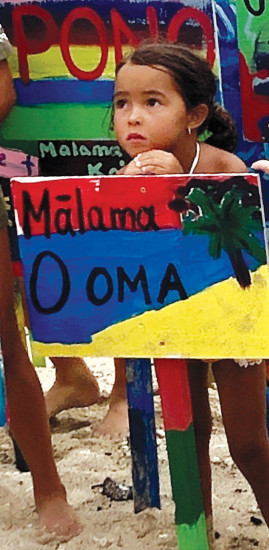
Thanks to the 2% Land Fund process, Kīpapa Park and ‘O‘oma in North Kona are permanently protected and the title for South Kona’s Amy Greenwell Ethnobotanical Garden is preserved with a conservation easement.
If it were not for the timely support of the 2% Land Fund, a mixed residential and commercial development with a footprint of about 1,000 homes may have been built at ‘O‘oma. Councilwoman Karen Eoff co-wrote the resolution to initiate the purchase of ‘O‘oma along with Council Member Angel Pilago.
Karen says that Kohanaiki ‘Ohana, the nonprofit that cares for the adjacent Kohanaiki parcel, has received money from the Maintenance Fund two years in a row to work on a special habitat restoration project at ‘O‘oma, in partnership with Innovations Public Charter School and other community groups. Students regularly clean up the beach, outplant coastal vegetation like dwarf coconut and hala that will prevent shoreline erosion, and outplant natives like maiapilo and naio that will attract the endangered Hylaeus bee. Also known as the Hawaiian yellow-faced bee, the 63 species of Hylaeus bee that are endemic to Hawai‘i do not sting, produce honey, or construct hives.
Additionally, 2% funds have secured the protection of 15 acres of land along Ali‘i Drive that the County has transformed into the new Kīpapa Park, located directly mauka (upland) of La‘aloa Bay Beach Park, also known as Magic Sands.
Debbie suggests, “Citizens can continue to support the 2% Land Fund at the polls this November by voting ‘yes’ to allow nonprofits to pay people to work on the lands acquired by the fund and by voting ‘no’ regarding the hiring of PONC staff.”
A Small Group of Committed Citizens Can Change the World
The 2% Land Fund’s success testifies to the power of a united grassroots effort, from the dedicated citizens who first collected signatures for the original Save Our Lands Citizens’ Committee petition to the nonprofits who actively steward these wahi pana (treasured places). These majestic lands will continue to educate and inspire Hawai‘i residents and visitors for generations to come. ❖
For more information: debbiehecht.com
Mahalo Ahualoa Farms–Local Agriculture Story Sponsor
